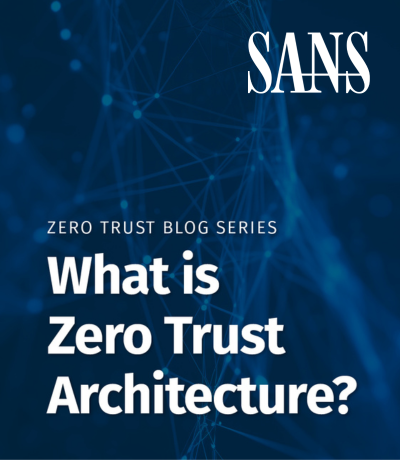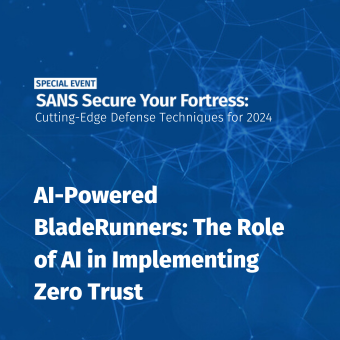Zero Trust Security Training and Resources
SANS provides comprehensive training, certification, and resources for Zero Trust Security techniques, empowering analysts with the skills and tools necessary to collect and analyze publicly available information to support investigations, critical decision-making, and improve overall security posture.
Zero Trust Security Training Courses
Zero Trust Resources
GIAC Defensible Security Architect Certification (GDSA)
The GIAC Defensible Security Architect (GDSA) certification validates a practitioner's ability to design and implement a strategic combination of network-centric and data-centric controls to balance prevention, detection, and response capabilities.
FAQs
What is Zero Trust Security?
Zero Trust Security is a cybersecurity principle that assumes no user or device, inside or outside the network, should be trusted by default. Access to resources is granted based on strict identity verification and requires continuous authentication, authorization, and validation.
What is Zero Trust Network Access (ZTNA)?
Zero Trust Network Access (ZTNA) is a technology that provides secure remote access to applications and services based on the Zero Trust principle. It controls access on a per-session basis, ensuring that only authenticated and authorized users can access specific network resources.
What is the History of Zero Trust Security?
The concept of Zero Trust Security was first introduced by John Kindervag in 2010 while he was a principal analyst at Forrester Research. It was developed as a response to the limitations of traditional network security models, which relied heavily on perimeter defenses.
What are Some Zero Trust Use Cases?
- Remote workforce security: Ensuring secure access for remote employees.
- Protecting sensitive data: Restricting access to confidential information.
- Regulatory compliance: Meeting stringent data protection and privacy regulations.
- Multi-cloud environments: Securing cloud-based resources across different platforms.
What are the Main Zero Trust Best Practices?
- Verify all users and devices: No one is trusted by default.
- Apply least privilege access: Limit user access to only what's necessary.
- Encrypt data: Both at rest and in transit.
- Continuously monitor and log activity: For real-time threat detection and response.
- Segment networks: To reduce lateral movement within the network.
What are the Benefits of Zero Trust?
- Enhanced security: By reducing the attack surface and mitigating insider threats.
- Improved compliance: Through better data protection mechanisms.
- Scalability: Adapts to changing environments and technologies.
- Reduced risk: By continuously verifying and authenticating access requests.
- Better visibility and control: Through detailed monitoring and logging of network activities.



